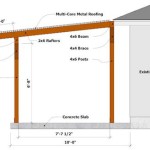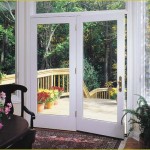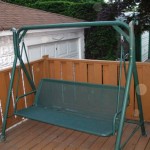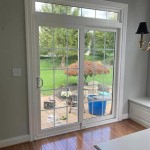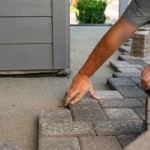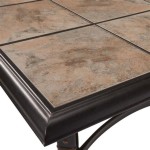Types of Enclosed Patios: Enhancing Outdoor Living Spaces
Enclosed patios represent a significant extension of the home, blurring the lines between indoor and outdoor living. These structures offer protection from the elements, allowing individuals to enjoy their patios year-round, regardless of weather conditions. The construction of an enclosed patio can range from a simple screened-in area to a fully insulated and climate-controlled space, each offering unique benefits and design considerations.
The decision to enclose a patio is often driven by a desire for increased usability and comfort. An enclosed patio can serve as a versatile space for dining, relaxing, entertaining, or even as a home office or exercise area. The value added to the home is also a considerable factor, with enclosed patios often increasing property value and appeal. This article will explore various types of enclosed patios, focusing on their construction materials, design options, and associated advantages and disadvantages to inform homeowners considering this home improvement project.
Screened-In Patios: A Cost-Effective Solution for Pest Control
Screened-in patios are one of the most common and affordable types of enclosed patios. They primarily consist of a framework, typically constructed from wood, aluminum, or vinyl, that supports screening material. This screening is designed to keep out insects, leaves, and other debris, while still allowing for ample airflow and natural light. Screened-in patios are particularly popular in regions with warm climates and high insect populations.
The primary advantage of a screened-in patio is its cost-effectiveness. The materials required are relatively inexpensive, and the construction process is typically straightforward, often making it a viable DIY project for experienced homeowners. Screened-in patios also offer a relatively unobstructed view of the surrounding landscape, maintaining a strong connection to the outdoors. Ventilation is excellent, allowing for a comfortable breeze to pass through the space. However, the level of protection from the elements is limited. While screening provides some shade and protection from light rain, it offers minimal insulation and no defense against strong winds, heavy rain, or extreme temperatures. The seasonal usability of a screened-in patio is therefore limited to milder weather conditions.
The aesthetic options for screened-in patios are diverse. The framework can be painted or stained to match the existing home’s exterior, and various screening materials are available in different colors and mesh sizes. Consider the weave tightness of the screening to determine the effectiveness in keeping out small insects, like no-see-ums. Furniture options for screened-in patios should be weather-resistant, as the space is still exposed to humidity and temperature fluctuations. Regular maintenance, including cleaning the screens and inspecting the framework for damage, is essential to prolong the lifespan of a screened-in patio.
Sunrooms: Maximizing Sunlight and Weather Protection
Sunrooms, also referred to as solariums or garden rooms, offer a more substantial enclosure compared to screened-in patios. They are characterized by a predominantly glass or transparent wall and roof structure, designed to maximize sunlight exposure. Sunrooms provide a greater degree of protection from the elements, allowing for year-round use in many climates. They can be constructed as an addition to an existing home or incorporated into the original building design. The structural support for a sunroom typically consists of a combination of wood, aluminum, or vinyl framing.
The benefits of a sunroom extend beyond weather protection. The abundance of natural light creates a bright and cheerful atmosphere, which can be particularly appealing during the colder months. Sunrooms can also serve as a passive solar heating source, reducing energy consumption during the winter. The insulated nature of a sunroom, relative to a screened-in patio, offers better temperature control, although supplemental heating and cooling may still be necessary depending on the climate. The cost of constructing a sunroom is significantly higher than that of a screened-in patio, primarily due to the use of glass or other transparent materials, as well as the more complex construction process.
Sunrooms come in various styles, including three-season and four-season designs. Three-season sunrooms are typically uninsulated and designed for use during the spring, summer, and fall. Four-season sunrooms, on the other hand, are fully insulated and often include heating and cooling systems, allowing for year-round use. The choice between a three-season and four-season sunroom depends on the climate and the desired level of comfort. When designing a sunroom, it is crucial to consider the orientation of the room to the sun, as well as the type of glass used. Low-emissivity (low-E) glass can help to reduce heat gain in the summer and heat loss in the winter, improving energy efficiency. Adequate ventilation is also essential to prevent overheating during the warmer months. Furniture and décor for sunrooms should be chosen to complement the natural light and overall aesthetic of the space.
Enclosed Patios with Solid Walls and Windows: Creating an Extension of the Home
Enclosed patios with solid walls and windows represent the most significant investment and provide the most complete transition from outdoor to indoor space. These structures are typically built using traditional construction methods, with walls made of wood, brick, concrete, or other materials that match the existing home. Windows are incorporated into the walls to allow for natural light and ventilation, and a solid roof provides complete protection from the elements. This type of enclosed patio effectively functions as an extension of the home, offering a fully climate-controlled living space.
The advantages of an enclosed patio with solid walls and windows are numerous. The space can be used year-round, regardless of the weather conditions. The level of insulation is comparable to that of the rest of the home, ensuring comfortable temperatures and energy efficiency. These enclosed patios can be seamlessly integrated into the existing home design, creating a cohesive and aesthetically pleasing addition. They also offer a high degree of privacy and security. However, the construction process is more complex and time-consuming than that of screened-in patios or sunrooms, and the cost is considerably higher. Depending on local building codes, permits may be required for construction, and the project may need to be inspected by building officials.
The design options for enclosed patios with solid walls and windows are virtually limitless. The interior can be finished to match the existing home decor, and the space can be used for a variety of purposes, such as a family room, dining room, home office, or bedroom. It is important to ensure that the enclosed patio is properly insulated and ventilated to maintain a comfortable and healthy living environment. The windows should be energy-efficient and provide adequate natural light. The heating and cooling systems should be sized appropriately for the space. Furniture and décor can be chosen to reflect the homeowner's personal style and preferences. The possibilities for these types of enclosed patios really know almost no limits and that is what makes them so popular.
The selection of the most suitable type of enclosed patio depends on factors such as budget, climate, desired level of weather protection, and intended use of the space. Each option offers its own unique set of benefits and drawbacks. Careful planning and consideration are crucial to maximizing the enjoyment and value of any enclosed patio project. This will create an inviting and comfortable extension of the home.

Enclosed Porches Patios Decks Patio Enclosures

Diffe Types Of Patio Enclosures Custom Exteriors

What Kinds Of Patio Enclosures To Choose Mcbride Construction

How To Choose Between A Screened In Porch 3 Season Room Sunroom Or 4 For Your Triangle Raleigh Durham

Choose The Best Sunroom For You Types Of Sunrooms

Enclosed Porch Photo Gallery Patio Enclosures

Diffe Types Of Outdoor Enclosures Jonathan Roberts Landscapes

Screen Room Screened In Porch Designs S Patio Enclosures

What S The Difference Between A Covered Patio And Sunroom Budget Glass

9 Temporary Patio And Deck Enclosures For Winter Timbertech


